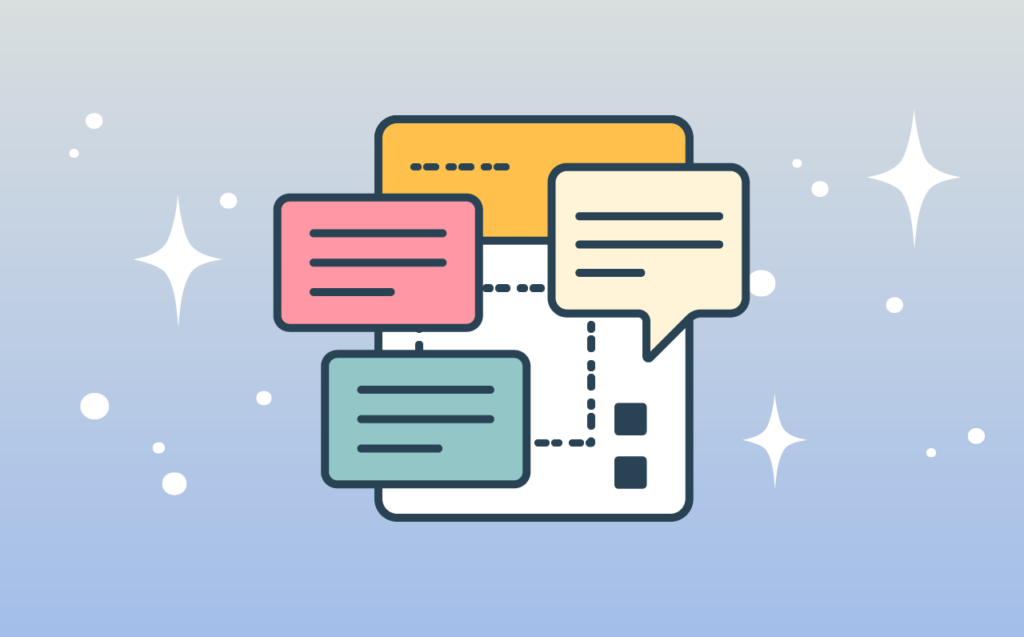It used to be that clinicians and tech folks might as well have spoken Greek and Latin to each other. The languages for clinical work and technology were completely different, and the two rarely crossed.
But things are changing. In a recent episode of the No Notes podcast, host Denny Morrison, PhD, sat down with Wes Williams, PhD, CIO of WellPower (one of the largest community mental health providers in Colorado). In his role, Dr. Williams oversees the systems and tools—from documentation platforms to data analysis software—that support thousands of therapy sessions each week.
But unlike a lot of CIOs, Dr. Williams didn’t start his career in tech. In fact, he was once a clinician himself—one who struggled to keep up on notes. That personal experience now informs everything he does, from system design to AI implementation.
During their conversation, Dr. Morrison and Dr. Williams highlighted the unique value of having someone who is fluent in both clinical care and tech at the IT decision-making table. They also dug into how AI is making documentation easier, what it really takes for a tech vendor to earn clinician trust, and why having “translators” matters as the gap between care and technology narrows.
If you’ve ever wondered how these two worlds can possibly make sense together (and how their intersection might be changing care for everyone), this episode is worth your time.
Want to hear the whole conversation? Listen to the full podcast episode here.
The Journey from Clinician to Tech Leader
Years ago, Dr. Williams was a child and family clinician in Colorado, right in the thick of community mental health. Like so many therapists, he quickly realized that paperwork could make or break his career enjoyment (and sustainability).
“I struggled with documentation,” Dr. Williams said. “And by struggle, I mean, I got into some serious trouble by falling really behind on my documentation.”
His administrative problems grew as the workload grew—especially as his trauma cases piled up. So, he started experimenting with new ways to manage his notes. He remembers designing a mail merge system, keeping track of sessions in Excel—trying pretty much anything that might make the process less overwhelming.
A turning point came when HIPAA security rules pushed his organization to adopt electronic medical records. Dr. Williams stepped up, joining the clinical advisory committee and soon realizing he wanted to take on a larger role. When he offered to help configure the new EHR system, his executive director responded, “Great, you can have this job. Just remember, you can’t keep the pay raise if you go back to clinical work.”
He remained in IT, and today, Dr. Williams is WellPower’s Chief Information Officer. He spends most of his days working with teams to figure out which technology actually helps—and how to make it work better. Dr. Williams makes sure clinical staff have a say in new systems, and he draws on his own background to spot where things might get complicated for therapists. His role is less about selling tech and more about making sure the tech serves the people doing the work.
The Paper Past vs. The Digital Present
Dr. Williams and Dr. Morrison both started their behavioral health careers during the era of paper documentation. Dr. Williams even liked it—reminiscing on how quickly he could jot down notes on paper.
“Paper was easy,” he said. “Paper was straightforward in terms of doing the work and focusing. I would have a pre-printed clipboard on my lap. I would scribble little cues to myself and then maybe finish up the note after folks walked out, but I could do a whole day’s worth of notes in 15 minutes at the end of the day.”
Dr. Morrison had a similar experience, but he highlighted a critical downside of handwritten notes: accuracy. Paper might have been quick, but it was easy to lose track of important details. “I was just absolutely terrible at it,” he admitted, remembering how easily he forgot specifics between sessions.
The shift to electronic records was a significant adjustment for both Dr. Morrison and Dr. Williams. Digital documentation wasn’t as straightforward or comfortable as paper. It required more effort, concentration, and time. But despite the extra steps, both clinicians agreed electronic notes brought improvements in accuracy, accountability, and ultimately, care outcomes.
When Clinicians Build Tech Systems
Dr. Williams may call himself a “recovering clinician,” but his clinical background still shows up in every part of his work. As CIO, he’s responsible for implementing and managing the systems that therapists and care teams use every day. He hasn’t forgotten what it’s like to be the one trying to finish notes between sessions or clicking through way too many screens while trying to focus on the client in front of him.
That perspective has shaped how he approaches technology decisions. He’s less interested in what a tool can do in theory, and more focused on how it holds up during a packed day of appointments.
In one conversation with a school-based provider, he heard just how easily a system can get in the way. That clinician knew the exact order he had to follow to complete a note, but during a session, he said it was too easy to lose track and click the wrong thing. “It’s simple,” the clinician said, “but it’s distracting.”
That kind of feedback is exactly why Dr. Williams has kept his clinical license active. And this year, after two decades away from direct care, he actually decided to start seeing clients again—beginning with intake assessments. His motivation was partially personal, but it was also about staying close to the work.
“I’ve built all these systems for our clinicians,” Dr. Williams said. “Now, I want to see how it actually plays out in practice.”
AI in the Real World: Impact on Documentation
At WellPower, AI is already playing a big role in helping clinicians keep up with documentation. It started with ambient listening in telehealth sessions, but over time, the tools expanded to in-person care and now support both live and post-session workflows (through live session audio capture and bullet point text input, respectively).
Dr. Williams described the shift as surprising. At first, he assumed an ambient scribe (i.e., an AI tool that generates a draft note based on what’s said during the session) would be the most valuable type of AI technology. But clinicians quickly found their own preferences. Some used ambient tools; others preferred the text input option—what WellPower providers refer to as “quick note”—where they can enter their own bullet points post-session, and the AI generates a full note.
Before AI, WellPower clinicians spent more than 10 minutes writing each note. But, with ambient scribe technology, that dropped to about 4.5 minutes. And with the text input tool, some clinicians now complete their notes in just 3.5 minutes.
Clinicians have used that extra time in different ways. Some saw more clients, while others logged off earlier in the evening.
“[Before AI] we had clinicians who were coming to work, doing sessions, going home, feeding their kids, putting the kids to bed, logging back on to finish their documentation,” Dr. Williams said. “And that is no way to prevent burnout.”
Trust, Buy-In, and Barriers
At WellPower, providers aren’t required to use AI tools. The initial AI rollout was intentionally low-pressure so staff had the space they needed to observe, ask questions, and decide for themselves whether to jump onboard.
Of course, many were hesitant at first. After years of what felt like constant change, enthusiasm for a new system wasn’t high, and for those who had already developed their own documentation practices, switching to a different approach felt unnecessary. AI also raised new concerns around privacy, autonomy, and client trust.
Dr. Williams expected those concerns and made trust the focus of the implementation process. As a result, every new tool goes through an ethics review focused on transparency, sustainability, and user control. “Part of what you’re talking about here is trust,” he said. “And part of it is change fatigue.”
One decision that helped foster trust was selecting an AI tool that does not make or store audio recordings. Instead, it processes short stretches of speech in real time—then codes them into written documentation directly with no transcription and no archive.
Clinicians also had flexibility with adopting the tool. They could try it during sessions or use it afterward. They could switch between workflows, ask for support, or opt out entirely. That autonomy helped reduce resistance, allowing usage to grow more gradually and organically.
Today, about half of outpatient staff at WellPower use AI to support their documentation.
The Future of Behavioral Health Tech
AI has already made documentation faster and easier, but Dr. Williams knows its potential extends well beyond administrative support. AI could eventually help guide care paths, highlight key information therapists might be missing, and support better risk assessments. These features can make the work of clinical care a little less overwhelming—and a lot more effective.
Even in the realm of documentation, Dr. Williams anticipates that AI will continue improving and adding even more value—by guarding against compliance penalties and RCM snags, for example. At WellPower, AI is already making notes more complete and clinically rich—and more importantly, unique.
“It’s not that the notes were copy-paste before,” Dr. Williams said. “But there were standard phrases people used all the time.”
As with most tech, though, not every path forward is an improvement. When AI is layered onto old systems without real change, it risks automating processes that were never working well to begin with. Dr. Williams described this possible future as the “boring apocalypse,” where documentation becomes a loop: AI generates a note, another AI reads the note, and nothing about the system gets better. “We have fantastic computer tools that are just recreating paper bureaucracy,” he said. “Do we need the note at all, or are we just generating it because we always have?”
To avoid that future, Dr. Williams believes clinicians need to stay involved in shaping how these tools are built and used. The best outcomes come from partnerships between teams, not from top-down mandates. That starts with transparency and trust—and leads to technology that actually helps people do the work they signed up to do.
Ready to see why hundreds of organizations like WellPower trust Eleos as their AI partner? Request a personalized demo today.

